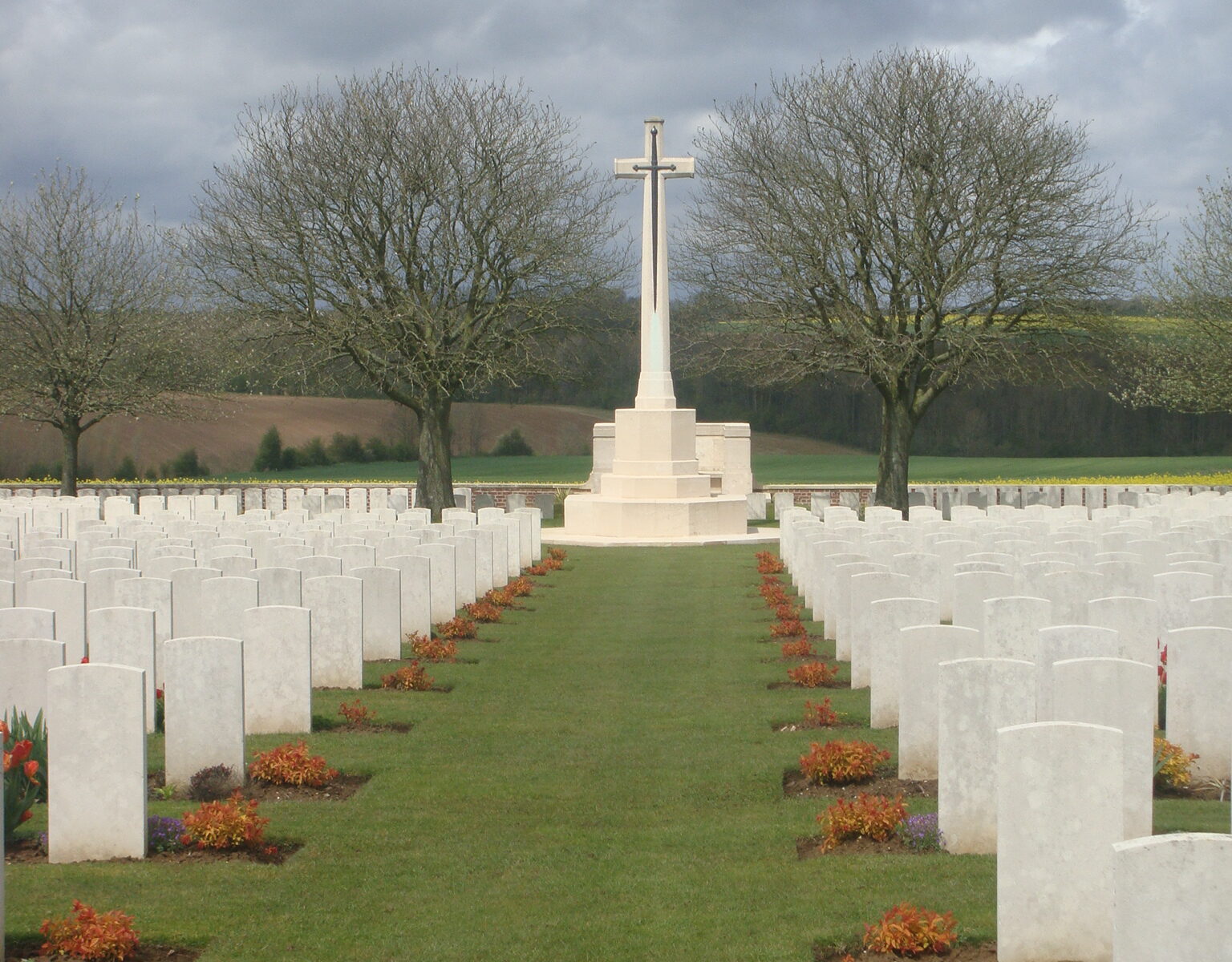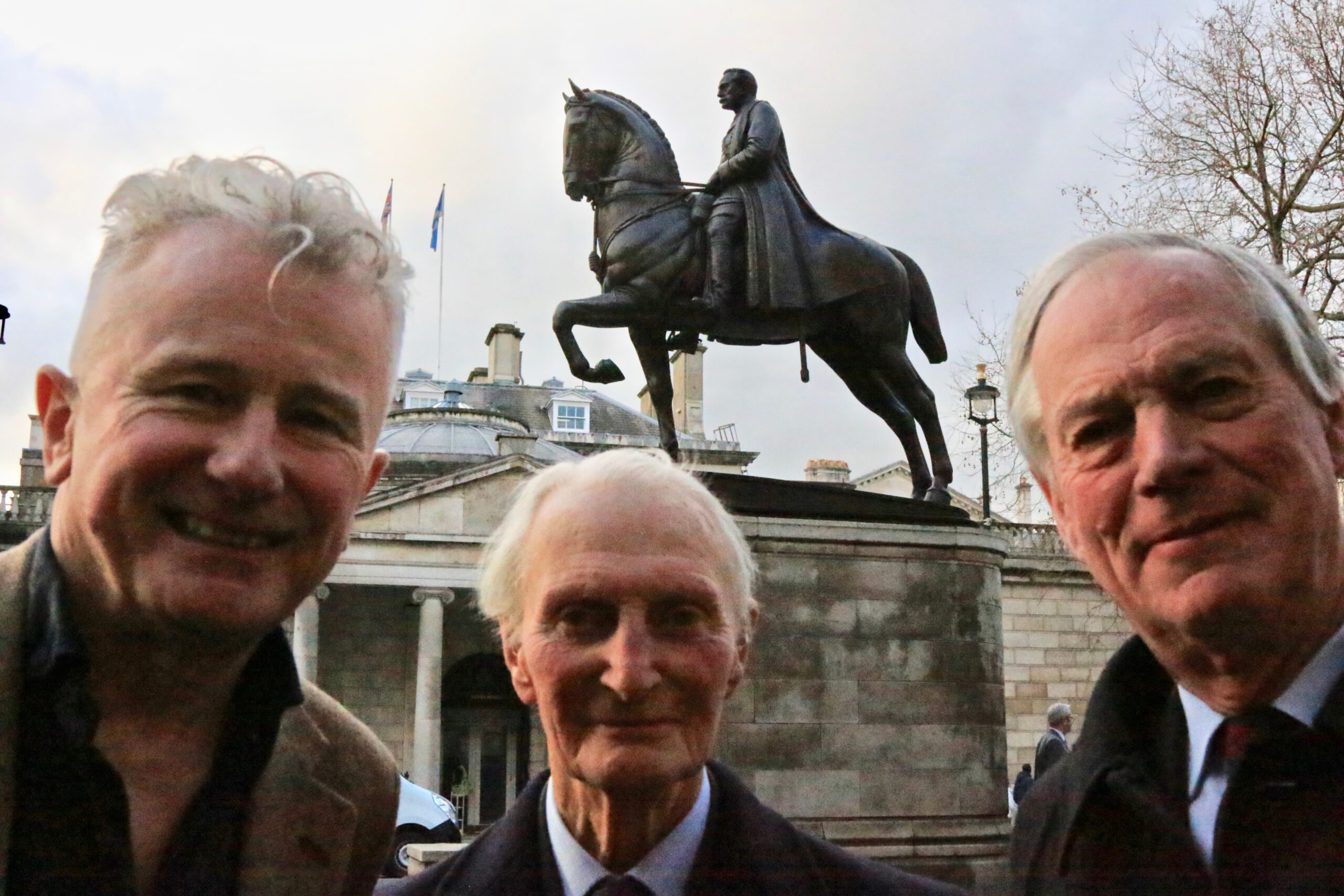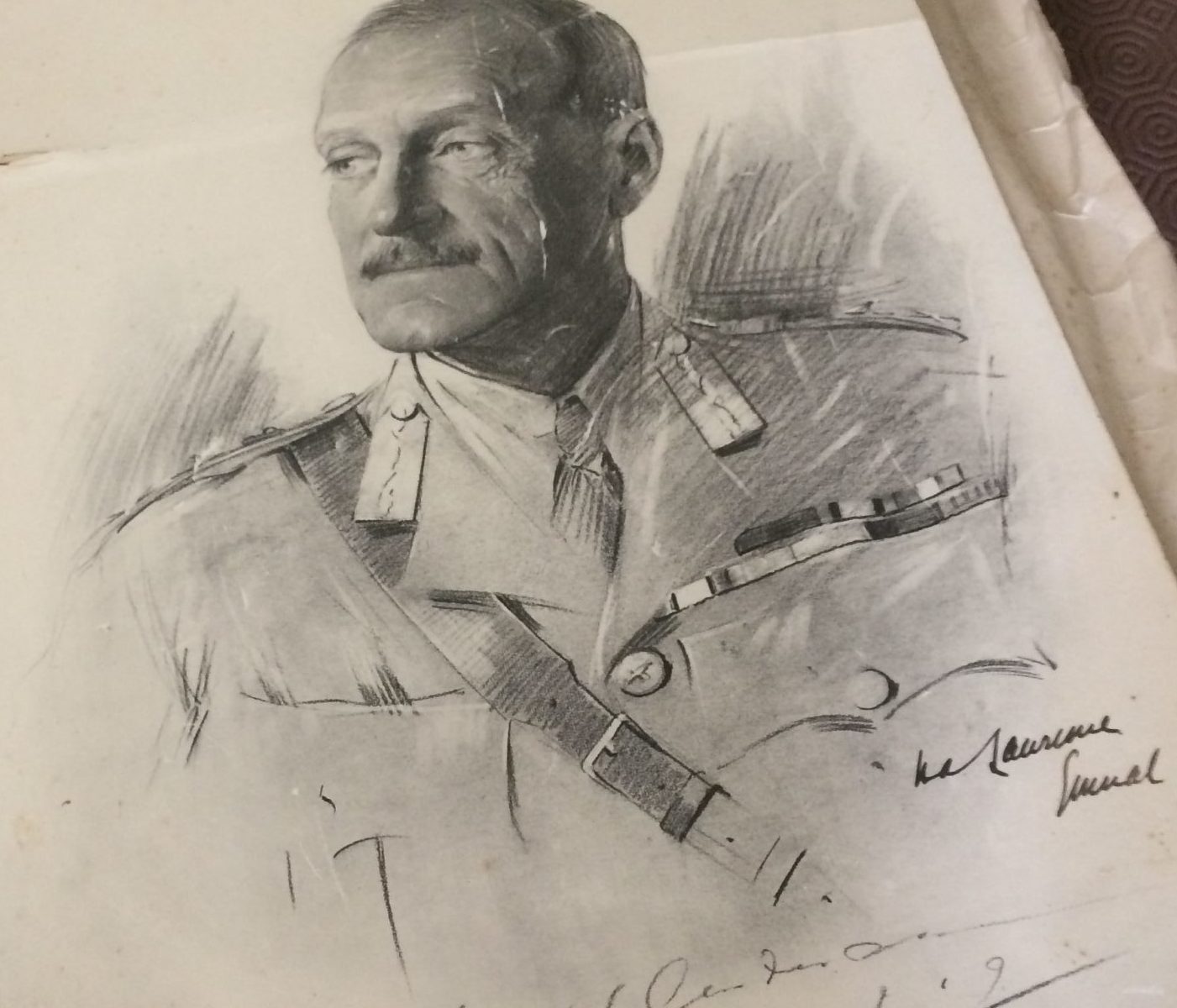During the war Percy served as GSO 1 with three different divisions. The 27th, 48th and 31st. After this he served on the staff of XI Corps before going on to become MGGS with Fifth Army. He changed his name to Percy from Baumgartner in 1917.
Major General Sir Louis Bols

When war broke out in 1914, Bols was forty seven years old with a long military career behind him. Born in Cape Town, he joined the Devonshire Regiment in 1887 following his education in England. As part of Britain’s ‘colonial police force’ he served in Burma and with the Chitral Relief Force. He was present at several of the major battles of the South African War including Colenso and the Relief of Ladysmith. Awarded the DSO and twice mentioned in dispatches, Bols returned to the UK in 1902. At the start of the First World War, he was in command of the Devonshire Regiment. The following year, Bols was promoted to lead the 84th Infantry Brigade during the Second Battle of Ypres when the German army attacked using gas. In autumn 1915, he was appointed to head the staff of XII Corps which was soon followed by him becoming MGGS of Third Army under General Edmund Allenby. He remained in this position until after the Battle of Arras in 1917 when transferred to head 24th Division. The partnership with Allenby resumed when he became his chief of staff in Palestine from 1917-1918. Bols was a colourful figure who courted some controversy. He died in Bath in 1930.
Sir Hugh Bruce Williams
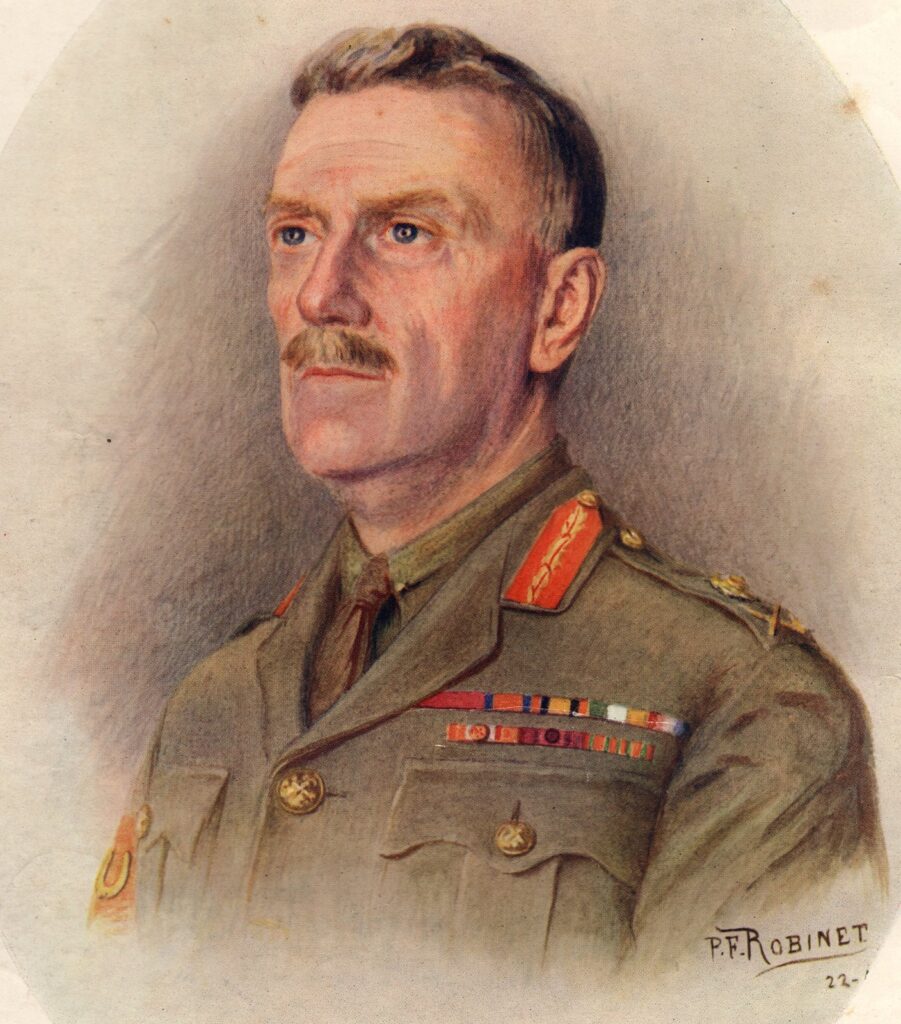
As Major General General Staff of Second Army from July 1915 until June 1916, Hugh Bruce Williams was one of the fifteen soldiers to hold this position on the Western Front. He was born in 1865, the son of a general. Educated at Winchester, he joined the Royal Engineers in 1885 and attended the “Shop’ at Woolwich. He progressed to the Staff College course at Camberley in 1899. In common with many of the senior command of the British army he fought in the Boer War and was awarded the Distinguished Service Order in 1901. When the First World War broke out, Bruce Williams was forty nine years old. After serving as a senior staff officer he went on to take command of 137 Brigade in the 46th Division. There were many officers who moved from staff roles into operational commands. My research has looked at how these men fared in both positions.
Sir Herbert Lawrence: new presentation

A new presentation covering the life and career of Lawrence has been published online. The talk was given in January via Zoom as part of the Western Front Association’s regular webinar series. It can be accessed using the this link: https://www.youtube.com/watch?v=pl5FPwpt6NA
Tours to the Western Front
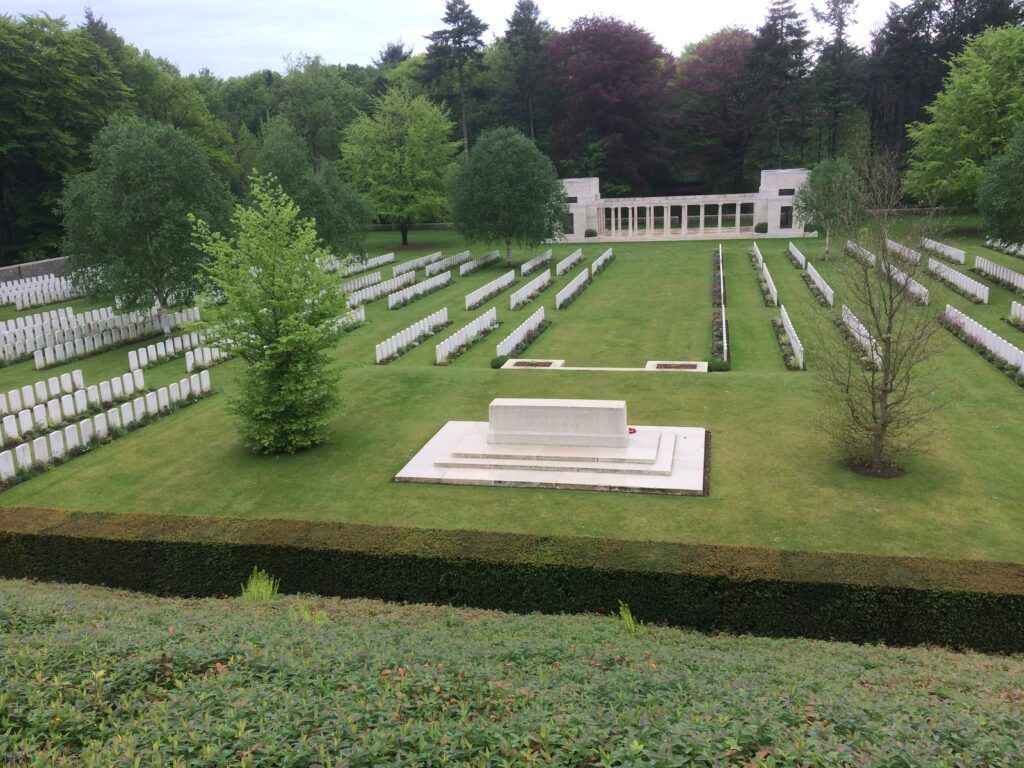
No tours can currently take place owing to the restrictions imposed upon international travel. The tour to Ypres planned for mid May has been cancelled. The only tour with firm dates will be to Arras from May 19-22 next year. Other tours will have to be rearranged when the travel situation becomes clearer.
Siegfried Sassoon

Poetry and literature have been influential in shaping the British narrative of the First World War. One of the best known writers was Siegfried Sassoon. His poetry has played a significant role in determining some of the most popular perceptions of the war. This view of how the war was conducted was underlined by his autobiographical account The Complete Memoirs of George Sherston.
Criticism of the command of the British army has not been hard to find in the historiography of the war with Sassoon one of the leading lights. Integral to that command function, the work of the staff has been the subject of fierce condemnation by many of the memoirs generated by the war. If an action failed, blame the staff. They have been perceived as an elite who did not share the dangers of war with the troops. The staff have been characterised as incompetent, isolated and indulged.
Was there another side to that argument? What about the case in defence of the staff? It was notable that Sassoon wrote, ‘Let the Staff write their own books about the Great War, say I. The Infantry were biased against them, and their authentic story will be read with interest’. In my book, The Men Who Planned the War (2016) I have endeavoured to tell that story.
The Black Watch at Ypres 1914
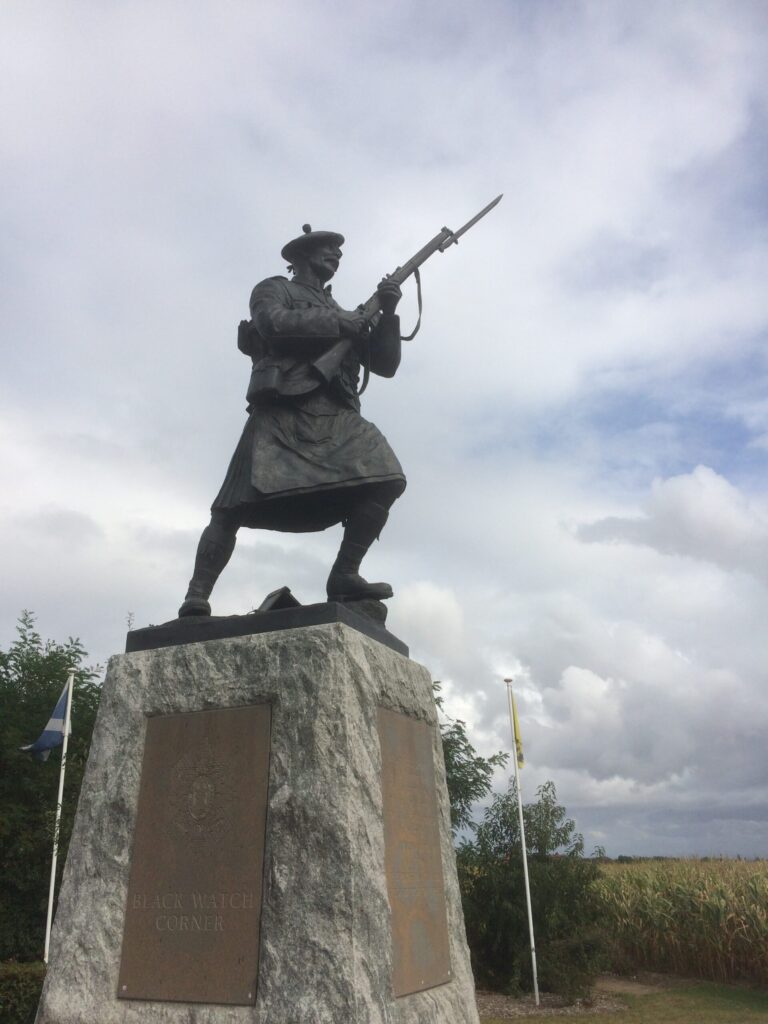
This memorial to the Black Watch commemorates the battle known as ‘Nonne Boschen’ (Nun’s Wood) on 11 November 1914. The Prussian Guard together with the 54th Reserve Division had been ordered to take Polygon Wood. The barrage began at 0630. At 0900 German troops advanced on a nine mile front in mist and rain. Across the line the attack faltered apart from a gap between the southern end of Polygon Wood and Nun’s Wood. A company of Royal Engineers with forty members of the Black Watch had just completed a strong point here. This was merely a trench inside a cottage garden with a few strands of barbed wire. When the Guards attacked the British troops opened up such an effective fire that the Germans broke formation. With the help of divisional artillery they were stopped and eventually beaten back. The action of the Black Watch in preventing any breakthrough has been remembered here with this fighting figure.
Senior Staff Officers
The highest level of staff officer in the British army was a Major General General Staff. On the Western Front each of the five armies had an MGGS heading a team of staff officers. For example, Major General ‘Tim’ Harrington was the senior staff officer at Second Army. He worked closely with the Commander in Chief General Sir Herbert Plumer. The MGGS was a key individual in the command team.
During the war, there were only fifteen officers who served in the MGGS position on the Western Front. A small group of individuals who had a significant influence on the way operations were planned and prosecuted. They were all regular soldiers with an average age of forty five. All of them had been to Staff College.
Although this group of senior officers played a critical role during the war, little has been written about them. I am currently researching this small cohort to evaluate just how important they were to achieving victory.
Herbert Lawrence and Douglas Haig
In 1918, Sir Herbert Lawrence worked closely with Sir Douglas Haig as his Chief of Staff. One hundred years on, this photograph was taken in front of Haig’s statue on Whitehall in London. The author is pictured with John Abel Smith (centre), grandson of Lawrence and Lord Astor of Hever (right), grandson of Haig.
Soldier Banker (2012)
General Sir Herbert Lawrence became Chief of Staff in 1918. Many were surprised at this appointment. He had given up his lucrative job as a City banker to rejoin the army at the outbreak of war. This article traces his astonishing rise from retired major to second most important soldier in the army. The team led by Lawrence introduced new ideas and a fresh attitude. He forged a strong partnership with the Commander in Chief, Sir Douglas Haig. This proved crucial in meeting the challenges of a large-scale ‘industrial’ war.
Described as ‘man of outstanding ability both as a soldier and in business’, Lawrence made a significant contribution to Allied victory which has largely been overlooked.
‘Soldier Banker: Lieutenant-General Sir Herbert Lawrence’ was published in The Journal for Army Historical Research in Spring 2012, Volume 90, Number 361.
The drawing of Lawrence shown here is held in the private collection of John and Caroline Abel Smith.

